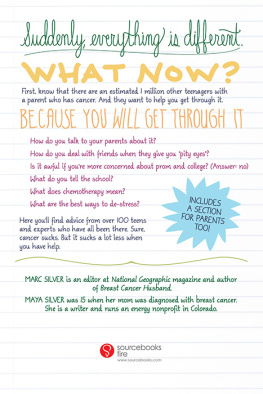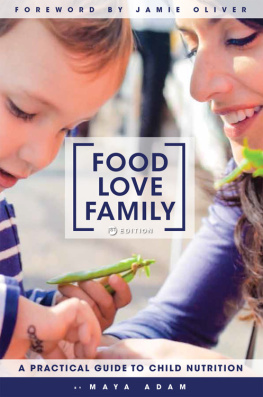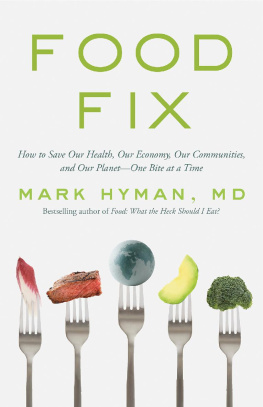PRAISE FOR THE DIRT CURE
The text is full of scientific information presented in a fun and informative way, giving concrete evidence that good food can transform ones life.
Publishers Weekly
This is a reader-friendly book, and Shetreat-Klein powerfully lays out the case for why bleach, hand sanitizers, fluoride, ibuprofen, and acetaminophen arent all theyre cracked up to be. She convincingly argues the case for a dirt-filled but chemical-free life.
Booklist
Thank you for downloading this Atria Books eBook.
Join our mailing list and get updates on new releases, deals, bonus content and other great books from Atria Books and Simon & Schuster.
C LICK H ERE T O S IGN U P
or visit us online to sign up at
eBookNews.SimonandSchuster.com
CONTENTS
I dedicate this book to the sacred: to rocks; to seeds, soil, and sunshine; to wind, water, and wilderness; to plants, trees, and all living beings seen and unseen.
PART I
Welcome to the Dirt Cure
Look deep into nature, and then you will understand everything better.
ALBERT EINSTEIN
I ts a particularly nerve-racking time to be a parent. With every new study, were reminded that the incidence of children with diseases and behavioral disorders like ADHD, autism, learning disabilities, anxiety, depression, epilepsy, bipolar disorder, and Tourettes syndrome is through the roof. During the last decade in the United States, children ages 3 to 17 with developmental disabilities increased by double digits. The incidence of conditions like autism increased by as much as 78 percent .
As if thats not enough to swear off procreating altogether, were also seeing an unprecedented rise in cases of food allergies, eczema, asthma, inflammatory bowel disease, and other autoimmune conditions, And so-called normal maladies like colic, chronic ear infections, poor sleep, and constipation have become all too common. (When did pooping once a week become normal?!) But most of all, why is it that no matter how educated and wealthy our society, how medically advanced, how successful at eradicating infectious diseases, our kids are only getting sicker?
As a pediatric neurologist, I think about these alarming statistics on a daily basis because I care for these children in my private practice. For many of my patients, Im what you could call a last stop. Most of the families who come to my officeoften having traveled a great distancearrive after struggling down a long road of unsuccessful treatments by traditional methods. Like many patients, theyve been given conventional medications for their symptoms, suffered side effects, and taken more medication to manage the first medications side effects. Worst of all, theyve been told that their children are simply untreatable. That they are going to be chronically sick for life.
I dont see their situations as helpless or hopeless. Then again, Im not your typical doctor. And thats partly because I was once one of those panicked parents without answers.
On my youngest sons first birthday, seemingly out of nowhere, he had his first episode of wheezing. It lasted a week, and it continued on and off for the next ten months. Despite numerous prescriptions from his pediatricianantibiotics, steroids, and nebulizershis symptoms would improve for only a few days. Then his nose would start running again and his breathing difficulties resumed. He perpetually erupted in mysterious itchy rashes. Simultaneously, his cognitive development plateaued. Though he had said his first words early at eight months, he stopped acquiring language the moment he began to have trouble breathing. He tripped frequently and no longer held out his hands to catch himself; his face and head hit the ground more times than we could count. Most frightening, no doctor could offer any approach that might reverse his course. If Ia doctor myselfwasnt getting answers from physicians, then who was?
Over the course of these ten terrifying months, I began to do my own research, asking those questions that no one else seemed to be asking: How had my sons body become so sick? We learned early on that dairy made him gassy, so he had been drinking soy milk instead. Could changing his diet again be the key to helping him?
Though our team of doctors discouraged us from pursuing this path, by then I recognized I was on my own in this journey. After tracking down an allergist willing to test him and not dismiss the possibility that his symptoms could be connected to food, we determined through both skin and blood testing that my son was severely allergic to soy. Within one week of entirely eliminating soyincluding the ubiquitous soy oil found in pretzels and other snack foods, and in almost everything cooked in restaurantsmy sons constant running noses, coughing, and wheezing disappeared. More amazing still, his language promptly began to improve after being stalled for months.
I know its hard to believe. I could hardly believe it myself. My sons sick body had led to a sick brain; and as his body became healthier, so did his brain.
Meanwhile, I felt terribly guilty. I had been feeding my son what I thought was a pretty healthy diet, and it turned out that his food had been making him sick. The hardest part was not that no one believed that his food was affecting his health. It was that no one seemed to think he was sick at all. It was just some asthma, and developmental delay. But what about those is normal?
Somehow, when no one was paying attention, chronic illness became the new normal for children. Instead of catching the occasional bug with clear onset and recovery, many children get sick, get a little better, and get sick again. And the illnesses evolve. These kidsmaybe even your own kidsgo from colic at six weeks to eczema at six months to chronic ear infections at one year to tubes or a tonsillectomy at three years to an ADD diagnosis at six. Many kids have medication lists that would rival those of senior citizens: steroid cream for eczema; H2 blockers for gastric reflux; antihistamines for allergies; anti-inflammatories for migraines; Miralax for constipation; stimulants for ADHD and learning disabilities; SSRIs for depression; mood stabilizers for anxiety... sometimes all prescribed at the same time! And more and more kids take insulin for type 1 diabetes or metformin for type 2 diabetes; thyroid medication for hypothyroidism; antiepileptics for seizures; antipsychotics for explosive behavior or anxiety; and steroids or other immune modulators like chemotherapeutics for a wide range of autoimmune diseases that have become shockingly common in children.
Meanwhile, we live in a world of hand sanitizers, antibiotics, and steroids, as well as pesticides, chemical fertilizers, and GMOs. These advances were supposed to solve societys ills, yet even as lives have been saved, somehow children have become sicker than ever before. Weve been told dirt is bad, germs are bad, bugs are bad, and weeds are bad. And weve taken all the necessary precautions against these interlopers. We bleach away germs, we inoculate our kids against microbes, we treat infections with antibiotics and Tylenol, we poison household and garden pests, and spray weed killer to achieve perfect lawns and crops. Weve done everything right.
Still, our children are struggling. Could we be missing something? Consider: The latest research shows that children exposed to bleach actually have more, not fewer infectionsincluding a 20 percent higher risk of coming down with the flu. Were starting to understand that short-term gains from technology may not be the best solutions to complex problems posed by nature.












